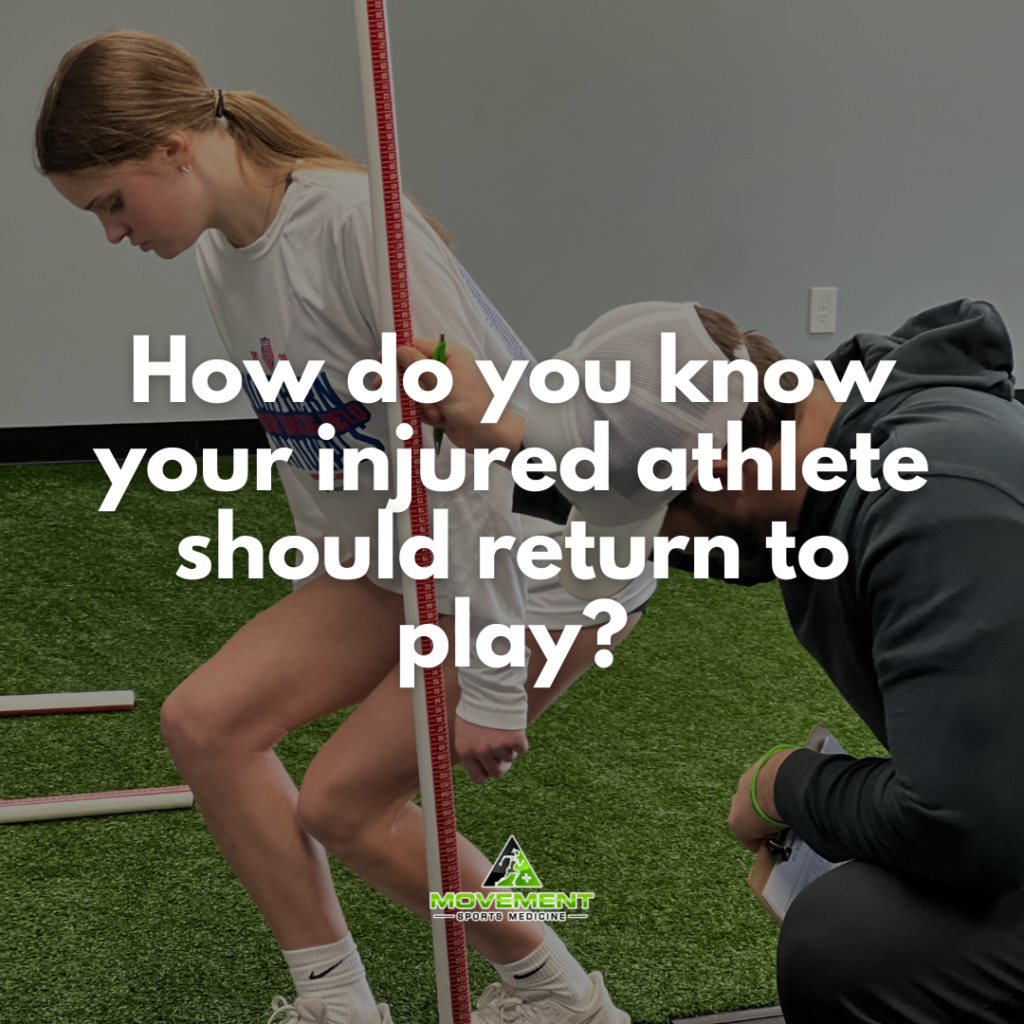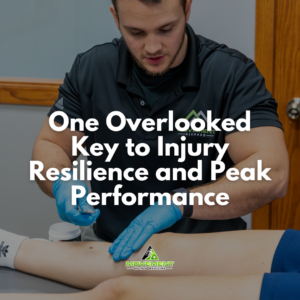How do you know your injured athlete should return to play?
Why “Feeling Good” Isn’t Enough: What Parents Need to Know About Return-to-Play Testing
As an athletic trainer, I’ve heard it more times than I can count:
“They feel good.”
“The pain is gone.”
“They’re cleared by the doctor… Can they play this weekend?”
And my answer is always the same
Not until they’ve passed return-to-play testing.
Because feeling good and being ready are two very different things, especially when we’re talking about high-speed, high-risk sports.
Cleared Doesn’t Mean Prepared
Many injuries like ACL tears, ankle sprains, or shoulder dislocations can heal enough for a physician to clear an athlete for activity. But that doesn’t mean the athlete:
- Has regained full strength and neuromuscular control
- Can tolerate high-speed cutting, landing, or contact
- Is ready to perform under fatigue without compensating
- Feels mentally confident in their movements under pressure
Without testing, you’re guessing. And when you guess, you risk reinjury.
What Is Return-to-Play Testing?
Return-to-play (RTP) testing is a structured set of objective physical and performance evaluations designed to answer one essential question:
Can this athlete safely and effectively perform at the level their sport demands?
A comprehensive RTP protocol evaluates:
- Side-to-side strength and symmetry
- Power, agility, and change of direction
- Reactive control during jumping, landing, and cutting
- Movement quality under fatigue
- Sport-specific mechanics (e.g., sprint starts, throwing form, etc)
Think of it as a stress test for the athlete’s body, one that simulates the chaos and demands of competition, not just rehab room exercises.
The Risk of Skipping Testing
Research is clear:
- Athletes who return to sport without passing RTP criteria are 4–6 times more likely to reinjure.
- Young athletes are especially vulnerable because they often feel “ready” long before they are.
- The second injury is usually worse, and takes longer to recover from.
What feels like “just one more game” can cost your child their entire season… or more.
What You Can Do as a Parent
Ask the hard questions:
- Has my child completed objective, sport-specific testing?
- Are they symmetrical in strength, control, and movement quality?
- Have they been monitored during fatigue and real-time sport scenarios?
Don’t rush the process.
A few extra weeks of preparation now can prevent months of rehab later.
Work with professionals who prioritize performance, not just clearance.
Your athlete needs more than a doctor’s note — they need a complete plan that ensures they’re truly ready to return.
Because Your Athlete Deserves More
Your child deserves more than a “you’re good to go.”
They deserve a return-to-play process that:
- Protects their body
- Restores their confidence
- Prepares them to compete without fear or hesitationIf you’re unsure whether your child is truly ready, we’re here to help.
Movement Sports Medicine provides full-spectrum testing, rehab, and return-to-sport planning, so your athlete doesn’t just get back, they stay back.
Be Great Today,
Mason Chockley, ATC



